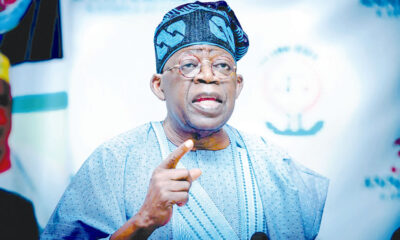Breaking News
Inadequate Spending on Health and Education in Nigeria: World Bank
According to data from the World Bank, Nigeria’s public spending on health and education is woefully low.
According to the recently published report “Human Capital Public Expenditure and Institutional Review,” public spending as a whole is only 12.1 percent of GDP, which is less than what is required to support basic public services.
This is in contrast to the 17.2% average for Sub-Saharan Africa and the 18.5% average for lower middle-income nations. Nigeria’s spending on health and education has varied during the last five years, ranging from 10% to 12% of GDP./ 0:00
“It is clear that this level of spending is insufficient to provide appropriate vital public services when compared to worldwide standards. Consequently, a substantial amount of expenses, particularly related to healthcare, are paid for out of pocket, thereby preventing a substantial section of the population from obtaining access to these services.
By any measure, Nigeria’s public spending on health and education is woefully low, at $15 and $23 per person, respectively. States pay $14 of the $23 per capita that is allocated to education, with the federal government covering the remaining costs.
Similarly, states spend $8.5 of the $15 per person spent on health care. Spending at this level is insufficient compared to Nigeria’s peers. Given the need to address important concerns like the high rates of out-of-school children and child mortality, it is even more inadequate, the report stated.
According to the World Bank, the low level of public spending on health and education is mostly caused by the extremely low level of overall revenue.
According to the report, the percentage of the budget allotted to health and education in 2021 was 6.6% and 10.1%, respectively, of total spending (federal plus state).
Spending on Economic Affairs (18.4%) and General Public Services (24.2%) accounted for the two biggest budget portions. At 17.6% of the overall government (federal and state) budget, debt charges were the third-largest category of expenditures under the general public services category. Together, the social sectors—social protection, health, and education—received less than 25% of the federal budget in 2021.
“The states spend more on basic education and primary health care than the FG does. States spent N1,299 billion on health care and N731 billion on education in absolute terms, whereas the federal government spent N773 billion and N610 billion on each of those areas. Therefore, behind spending on health care, education accounted for the third-highest state government spending, the report continued.
It was suggested that in order to guarantee that health and education services are sufficiently funded in the medium to long term, raising state budget execution rates and increasing federal and state appropriations will be crucial.









